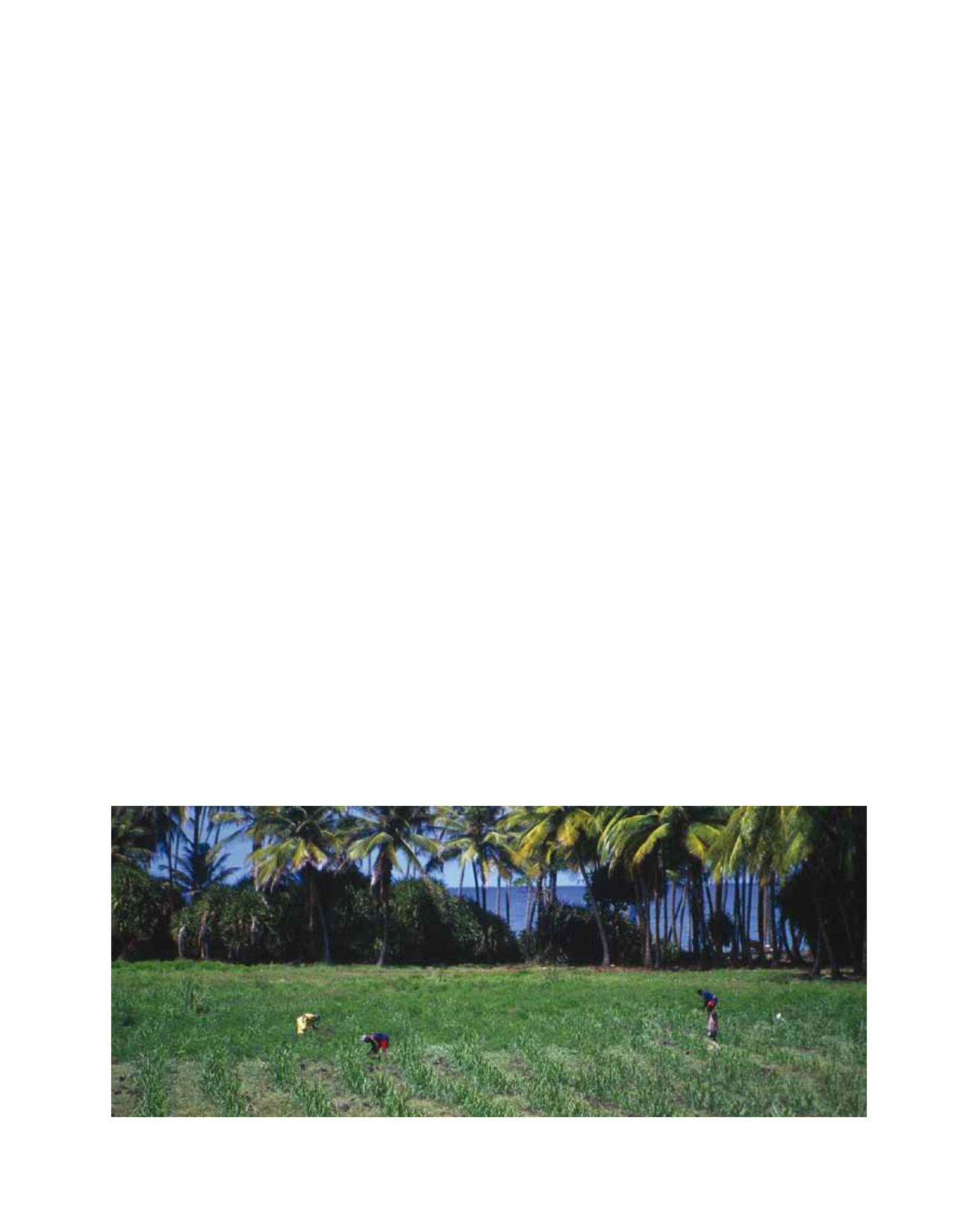

[
] 56
A
griculture
Climate services information system
CAMI recognized that developing information must be followed
by dissemination. In collaboration with its national partners, it
produces a regional bulletin for farmers, with the information and
interpretations highlighted earlier at a regional level. However,
CIMH has been working with the NMSs and agricultural extension
services, from Antigua and Barbuda for example, to develop their
own national bulletins.
11
Some countries have already launched
their bulletins while others are in the process of launching theirs.
Through feedback from users, and in particular the formation of
tripartite committees in the pilot states, the aim is to make this
product more relevant by focusing on particular needs, and making
the language more farmer-friendly. In collaboration with the
Technical Centre for Agriculture and Rural Cooperation, CAMI has
been investigating the potential use of other media for dissemina-
tion of information, particularly using more modern technology
such as mobile phones. Some consideration is also being given to
using smartphone applications. Through the bulletins, tripartite
committees and regional forums, CAMI has caught the attention
of agricultural decision-makers in the region. In some countries,
there have been requests for similar agro-meteorological training
for agriculture extension services.
User interface system
After a recommendation from its mid-term evaluation, CAMI has
been forming tripartite (NMS, extension services and farmers groups
as core) committees to expand and sustain the activity of the project
once it is finished. This is essentially a stakeholder committee and
has the capacity to act as an interface between the product develop-
ers and users. CAMI also established an online forum to enhance
discussion and feedback, and to ensure they are continuous. There is
now the need to link these separate entities into one comprehensive
user interface system. Further, some countries have been includ-
ing the CAMI initiatives, outputs and recommendations in disaster
risk reduction strategies for agriculture. Jamaica, for example, is
committed to a recommendation to its cabinet that its CAMI tripar-
tite committee be a part of a disaster risk reduction committee
recommended for agriculture.
Outputs and outcomes
Certainly, the region has to go well beyond what the
three-year CAMI project provides in order to make the
comprehensive impact in agriculture that the mete-
orological services and research institutions seek. The
project itself reveals many gaps that need addressing in
the follow-up from CAMI, including:
• Higher resolution and timely climate information
and forecasts, requiring a denser network of
meteorological instruments and greater allocation of
resources to cover the many agro-climatic zones
• A communication strategy for dissemination of
weather and climate information for agriculture (the
development process has begun, but needs to be
continued
• NMS staff dedicated to agro-climatology, rather than
having this as part of their day-to-day duties
• Further training of agriculture extension services
staff in agro-meteorology
• Enhancement of biological and general agricultural data
collection and recording (this has limited the impact of
pests and diseases and crop simulation activity)
• National disaster risk reduction committees in
agriculture (the tripartite committees formed
through CAMI or an enhanced version of these)
ratified by government and reporting to government.
Certainly, the list is not exhaustive, but it identifies
needs that often arise or are strongly recommended.
The fact that there is an activity that identified such
gaps, heightened the awareness of weather, climate
and climate change issues in agriculture, began the
provision of information specifically for the industry
and has influenced agricultural policy-making in the
region suggests that CAMI was well worth it, but needs
to move even further. The region looks forward to the
continued collaboration of all stakeholders in an indus-
try that has served the region for centuries.
Image: © www.istockphotocom/stevenallan
Agriculture in the Caribbean
















